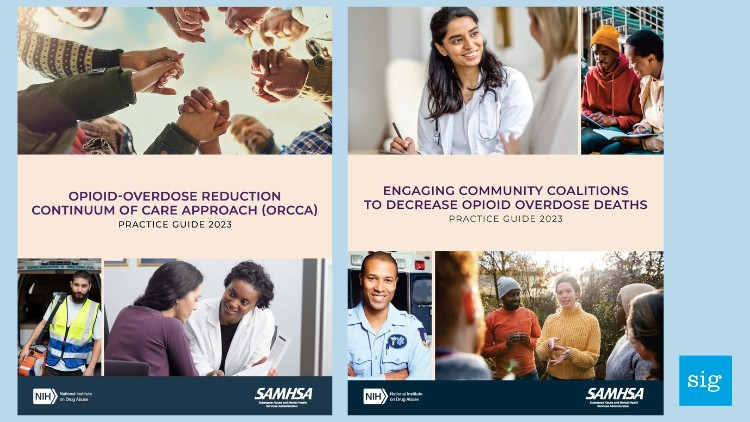The counties and townships are used as field examples of how to implement the practices set out in the guides.

Two recently released Substance Abuse and Mental Health Services Administration (SAMHSA) practice guides draw heavily on the learnings to date from the HEALing Communities Study (HCS) and the Communities That HEAL (CTH) Intervention approach, and specifically highlight New York State counties' engagement of coalitions with diverse stakeholders and people with lived experience, and use of strategies that address social determinants to promote treatment.
The Opioid-Overdose Reduction Continuum of Care Approach (ORCCA) Practice Guide 2023, created for communities, public health stakeholders and providers of technical assistance as a resource for individuals working to end the opioid crisis, includes a menu of evidence-based practices for reducing opioid overdose deaths and real-world tips for implementing the evidence-based practices. With information about overdose prevention education and naloxone distribution in higher risk populations, effective delivery of medications for opioid use disorder with outreach and delivery to higher risk populations, and safer opioid prescribing and dispensing, the ORCCA Practice Guide 2023 provides valuable insights to communities as they identify strategies and consider distribution of funding from opioid settlement payouts and other funding opportunities. Ulster County, New York, serves as an example of the efficacy of expanding existing systems and collaboration with a county mental health division and community-based, multiservice organizations, and incorporating peer outreach to provide emergency housing supportive of access into and reentry from treatment for opioid use disorder.
Another complementary resource to the ORCCA practice guide, Engaging Community Coalitions to Decrease Opioid Overdose Deaths Practice Guide 2023 was developed in recognition of the need to center community voices throughout efforts to address the opioid overdose crisis recognizing the effectiveness of the collective. With tools and real-world examples that can be used to build and strengthen community coalitions, the guide is a valuable tool for individuals who can help create new coalitions, and support and encourage opportunities to re-envision existing coalitions to address the opioid crisis in their communities. The work of the HCS team in Monroe County, New York, is used as an example of how to build an effective coalition that aligns with the community’s priorities, experience, and capacity for opioid overdose prevention, especially to address health disparities.
"We have been honored to work with communities across New York State and our partner states Kentucky, Ohio, and Massachusetts learning with them about effective methods to address the opioid overdose epidemic," said Dr. Timothy Hunt, SIG Associate Director and HCS Community Engagement and Intervention Investigative Lead. "These guides capture many pearls of wisdom from the field, from experts and lived experience during implementation of the CTH with coalitions and from other studies. The guides can aid and empower communities to use data to define the overdose problem for their localities, and to assemble diverse coalitions for selecting evidence-based strategies for action plans as noted in the ORCCA Practice Guide filled with resources. We hope you find these resources with many contributors helpful with much work still to do, and appreciate the NIDA, SAMHSA and RTI partnership."
